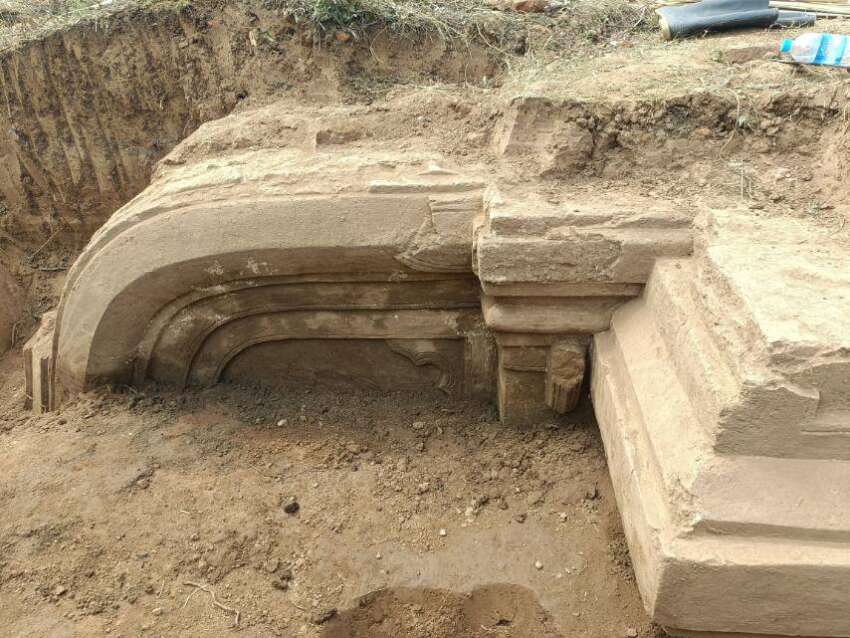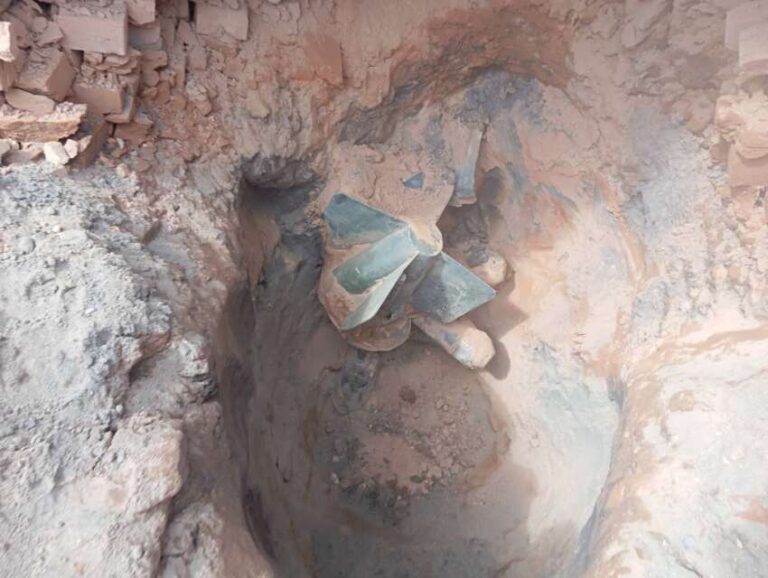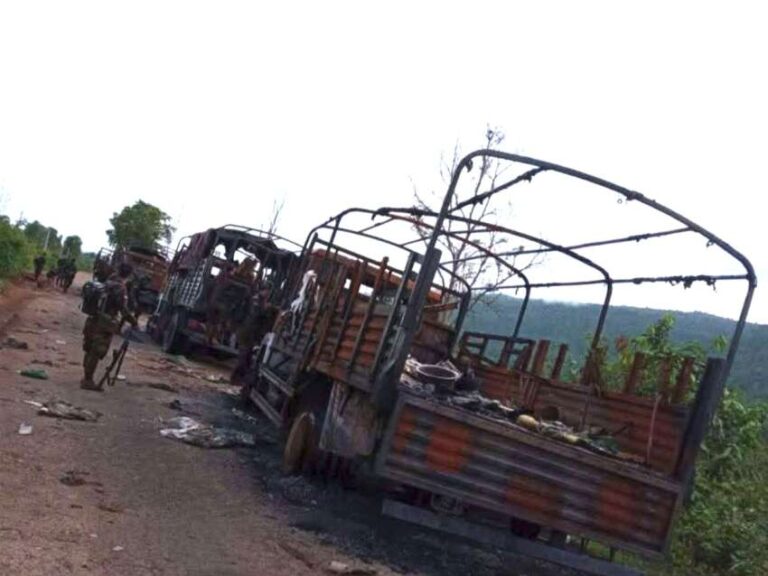
The military council’s Department of Archaeology and National Museum has announced the discovery of a water palace in the ancient city of Ratnapura Inwa following the Sagaing earthquake. The structure was found at the northeastern outer corner of Sithu Pon city wall in Tada-U Township, Mandalay Region. According to historical palm leaf manuscripts of Minister Letwe Nawrahta, the water palace was built during the early Konbaung period under the reigns of King Hsinbyushin and the Sagaing King. Parts of the southern Thabetkyin staircase were initially discovered in 2009 during local brick-making activities and had been preserved by the Department of Archaeology and National Museum.
The powerful earthquake that struck on March 28 revealed additional cultural heritage elements connected to the previously discovered staircase through newly formed cracks. Excavation work began on April 6, leading to the discovery of the northern arm of the eastern Thabetkyin staircase and elephant mounting platform. The excavation revealed detailed measurements of the structure, including a foundation platform measuring 10 feet 6 inches in length, 3 feet 8 inches in depth, with various architectural elements such as corner cuts, stair exits, and balustrade measurements precisely documented.
Based on recent excavation findings, researchers have determined that the structure is not as extensive as the water palace depicted in historical manuscripts. Instead, it appears to be a wooden building approximately 200 to 250 feet in length and 200 feet in width, constructed with wooden pillars and connected Thabetkyin staircases. Comparative analysis suggests it may have been similar to the Bargaya wooden monastery in Inwa and the Golden Palace monasteries in Mandalay, potentially featuring 8 to 10 Thabetkyin staircases. Initial studies indicate it was likely used for water-related ceremonies and royal functions rather than being a full-scale palace complex as depicted in historical records. The structure is now considered more accurately described as a water pavilion rather than a water palace, and systematic excavation work continues to uncover more details about this significant cultural heritage site.



